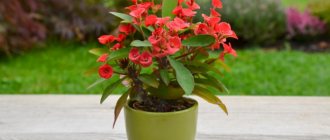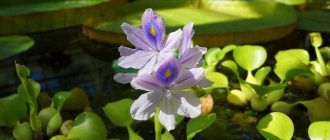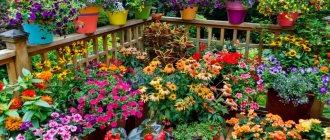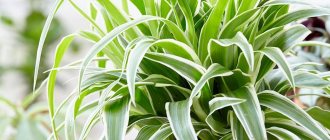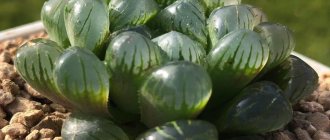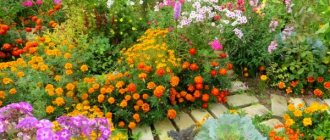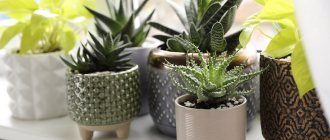Heather is a plant that easily tolerates both hot and cold weather. At the same time, in the cool season it is able to retain its decorative properties.
For growing in cold and even frosty conditions, select the simplest, non-elite varieties. The latter require shelter and will not tolerate wintering on an open balcony. Opt for a plant with a bright color, such as purple. Against the background of white snow, the contrast will be especially noticeable.
You can buy heather at any time of the year, but in autumn it is especially beautiful: from August to November the plant is covered with bright small flowers.
- House plants
7 popular plants that rarely survive at home
Stephanotis profusely flowering and other flowering vines
The inimitably delicate Madagascar jasmine requires wintering at temperatures of about +12 degrees Celsius (maximum +15 degrees) to produce narrow tubular flowers in beautiful inflorescences. But careful ventilation and increased lighting are no less important for him.
Huge blue passionflower flowers, similar to cavalry stars, on flexible shoots of the plant will bloom only after wintering in ventilated cool rooms. Ideal indicators for passionflower are +7…+12 degrees.
Mandevilla sandera and medinilla with their bright blooms will prefer a temperature of 15 degrees Celsius in winter. But multi-flowered jasmine, naked bougainvillea and loose mandevilla should be kept at 5-10 degrees.
Cold-resistant plants
Repeated planting allows you to enjoy fresh crops throughout the summer. To do this, the next sowing is carried out not after the previous harvest, but immediately as the first radish leaves appear.
It should be remembered that in temperate and subpolar latitudes there are long summer days and, for example, radishes must be grown during short days to obtain root crops, and during long days to obtain seeds.
A rich harvest of radish will be ensured by large seeds. They are soaked in saline solution, the bad ones float and are thrown away. The rest are placed at a distance of 2-4 cm from each other. Don’t overdo it with depth either - 1-2 cm is enough. Radishes, like radishes, thrive in moist and loosened soil.
2. Sorrel is a record holder among early vegetable crops. This is a perennial plant, it sprouts as soon as the snow melts. If there is no sorrel in the garden, sow it at any time. It is important to take into account the fact that the culture loves humidity. When planting for the first time, do not skimp on organic fertilizers.
3. Salad. It is sown just before winter, but late gardeners need to know that spring sowing is possible. The plant is unpretentious. By fertilizing it, you will receive gratitude in the form of a rich harvest. If you want to see lettuce for a whole season, renew the crops every 12-14 days.
In the north, both head and leaf lettuce can be grown successfully. Its seedlings can withstand frosts down to -2°C, and during the ripening period it tolerates even temperatures down to -6°C. Lettuce grows at an air temperature of +5°C, but the best growth occurs at +15-20°C during the day and at +6-10°C at night. For the formation of a head of cabbage, the optimal temperature is +12-14°C.
4. Carrots. Although this is a cold-resistant plant, it cannot boast of germination speed. This should be taken into account so that the seeds do not end up in dry soil. But even in this case, there is a way out - it is abundant watering. Choose open, not shaded areas for the orange beauty. With subsequent insufficient watering, unsightly “hairy” root crops are formed.
5. Celery. Prepare the seedlings two months before planting. Choose the planting depth in the garden bed so that only leaves are on the surface. This crop is planted at a fairly large distance from each other (35-45 cm). Add sawdust, compost and manure to the soil before planting - the harvest will pleasantly surprise you. Celery, like lettuce, is not afraid of temperatures of -6 °C.
6. Dill. It is planted from spring to autumn at intervals of 10-14 days, providing yourself with young greens on the table. This cannot be said about parsley - it is planted twice - in early spring and early autumn. And if the temperature allows, then later. They are planted in the shade, preferably in places after potatoes, cucumbers, white cabbage and cauliflower.
Cold-resistant plants and flowers for the garden
To characterize cold resistance, the concept of temperature minimum is used, at which plant growth stops. For a large group of agricultural plants its value is 4 °C.
The cold resistance of plants depends on
: period of ontogenesis, plant organ (flowers>fruits and leaves>roots>stems). Early sowing plants are the most cold-resistant. The cold resistance of a plant is characterized by the sum of biological temperatures required for its development - the lower, the higher the resistance: very early ripening - 1200°C, early ripening - 1200-1600°C, mid-early - 1600-2200°C, mid-ripening - 2200-2800°C, mid-late - 2800-3400°C, late-ripening - 3400-4000°C.
The death of unadapted plants when exposed to cold occurs due to loss of turgor, destruction of chlorophyll, and metabolic disorders. In plants, the following is observed: increased breakdown of proteins and accumulation of soluble forms of nitrogen; changes in the structure of mitochondria and plastids; decreased aerobic respiration and photosynthesis; disruption of membrane activity (transition to gel); decomposition processes prevail over synthesis processes; a violation of the permeability of the cytoplasm (increased viscosity), as well as a violation of the transport of substances and the outflow of assimilates.
In cold-resistant plants adapted to cold, unsaturated fatty acids predominate in the phospholipid molecules; as a result, the membranes do not harden in the cold; in addition, they have increased enzyme activity and a large set of isoenzymes, which, together, allows plants to maintain homeostasis (constancy of the internal environment).
Ways to increase cold resistance:
- hardening of germinating seeds and seedlings - kept for several days (up to a month) at alternating (every 12 hours) variable temperatures: from 0 to 5 ° C and at 15-20 ° C;
- soaking seeds in 0.25% solutions of microelements;
- grafting of heat-loving plants (watermelon, melon) onto more cold-resistant rootstocks (pumpkin).
3. Frost resistance of plants.
Frost resistance is the ability of plants to tolerate temperatures below 0°C and low negative temperatures.
The ability of plants to tolerate negative temperatures is determined by hereditary
the basis of this type of plant, however, the frost resistance of the same plant depends on
the conditions
preceding the onset of frost, affecting the nature of ice formation.
Causes of death
unadapted plants during frost are as follows. The ice formed during slow freezing in the intercellular spaces and cell walls draws water from the cells, while the cell sap becomes concentrated, and the pH of the medium changes. In addition, the cytoplasm is compressed by ice crystals - the colloids of the cytoplasm are destroyed. The resulting crystals displace air from the intercellular spaces, so frozen leaves become transparent. Eventually the ice crystals mechanically rupture the cells and the plant dies.
Frost-resistant plants have the following adaptations:
to exist at temperatures below 0°C: increased content of sugars and other substances that protect tissue; decrease in cell hydration; increase in the number of protective proteins.
Frost resistance is formed during the hardening
plants, which not all species are capable of. Hardening is confined to certain stages of development; different plant organs also have unequal ability to harden. During hardening, there is an outflow of substances from the above-ground organs to the underground - hibernating organs. This process requires light.
In 1979, I.I. Tumanov formulated the theory of plant hardening . According to it, the plant undergoes hardening in two phases. The first phase takes place in the light and at low positive temperatures (about 10°C during the day, about 2°C at night). Winter cereals pass it in 6-9 days, woody ones - in 30 days. In this case, the plant slows down and completely stops growth; sugars accumulate (up to 70% for dry matter, 22% for raw matter); the content of unsaturated fatty acids in the membranes increases; the freezing point of the cytoplasm decreases and the content of intracellular water decreases. The second hardening phase does not require light and begins immediately after the first phase at a temperature slightly below 0°C. It lasts about two weeks with a gradual decrease in temperature to -10...-20°C. In the second phase of hardening, almost all water flows out of the cytosol of cells and cytoplasmic proteins are rearranged; low molecular weight water-soluble proteins accumulate, which are more resistant to dehydration, and specific protective proteins are synthesized. The first hardening phase increases the frost resistance of plants from -5 to -12°C, the second - to -20...25°C.
Ways to increase frost resistance
:
- selection of frost-resistant plant varieties;
- agrotechnical methods (time and method of sowing, etc.);
- optimization of soil nutrition conditions in the autumn: the application of phosphorus and potassium fertilizers increases stability, and nitrogen fertilizers reduce it; the addition of microelements (Co, Zn, Mo, Cu.) also increases frost resistance.
Date added: 2016-12-16; ;
Similar articles:
Myrtle
One of the best phytoncides, famous for its ability to purify the air and release essential oils, the common myrtle (Myrtus communis) and its many varieties captivate with the density of branching, the beauty of small glossy leaves and the impeccability of the silhouette. Fragrant and bright, myrtle is one of the most beautiful evergreen indoor trees.
Myrtles do not like frost or proximity to heating devices, but they tolerate sudden temperature fluctuations and are not afraid of drafts. Cold drafts are dangerous for myrtle grown in bonsai, but in the warm season the wind will not frighten myrtle. It is in a draft that it releases the most essential oils.
To succeed in growing myrtle, you need to take care of bright lighting, cool wintering, access to fresh air, constant humidity and standard fertilizing. Myrtle easily forms into any strict shape and requires regular pruning.
Common myrtle (Myrtus communis). © Gildshire
The hall or foyer is not just a cold room
Spectacular giants, bright and expressive groups of plants that greet us from the first step in modern offices, business centers, high-rise buildings or townhouses always seem special to us. Plants that can settle in a cold hall or foyer, set the tone and mood literally from the threshold and emphasize the style and character of the design, architectural details and design ideas, play a very important aesthetic and decorative role.
But their purely practical characteristics are still much more significant. The conditions of the hall or foyer, regardless of what building they are located in, are always specific. And not all cultures are able to adapt to them.
The main problem of landscaping a hall or hallway is the temperature regime. If the hallway is almost always a room with lower temperatures, then for the hall, foyer or vestibule this statement is not always the case.
Lower temperatures compared to other rooms, especially in modern office buildings and business centers, are increasingly becoming the exception to the rule thanks to smart heating and air conditioning systems. But even where the average temperature corresponds to “residential”, another important problem is far from being solved - differences in temperature indicators, drafts, cold air flows.
In any hallways, halls and lobbies, temperature changes are very sharp. The minimum indicators to which plants are exposed during the cold season should precisely determine the boundaries for the selection of plants for such premises. For all hallways, halls and lobbies associated with the exit from the building, even with the latest climate control systems, plants are chosen from among the most cold-resistant crops that can not only survive, but also maintain decorative properties at 7-10 degrees Celsius in winter.
The conditions that houseplants encounter in cool “front rooms” that precede indoor spaces – hallways, foyers, hallways or foyers – are often compared to regular cold rooms. This is the biggest mistake you can make when choosing a landscaping strategy and searching for candidates for the role of the green guard, the first to greet guests when entering the house.
The range of indoor plants that are suitable for cold living rooms is much larger than the list of those crops that will do well in the hall or foyer. In fact, plants for the cold hall are a list of “selected” spartans, singled out especially from cold-hardy plants.
If temperature standards in hallways and halls establish a universal selection rule, then with lighting everything is much more complicated. The presence or absence of windows, their sizes, and the characteristics of artificial lighting also determine the selection of plants. But still, it is better to limit the “lower threshold” of illumination for cold halls. The selection standards are slightly shifted, the minimum illumination is equal to semi-shaded locations and 1000 Lux.
At the same time, shade-tolerant plants that prefer northern rooms are placed in cold hallways or halls only in partial shade, and plants that tolerate partial shade are placed in a diffused bright place, light-loving plants are placed in the brightest lighting with protection from the slightest shading.
Showcase and panoramic windows allow you to display even sun-loving crops in a cold hall or hallway. For most hallways, lobbies or foyers with large windows or a large area, choosing plants that can grow in both bright light and partial shade is considered optimal.
Intense artificial lighting, depending on the readings of the lux meter, can even allow placing crops that prefer southern window sills, but in the matter of artificial light it all depends on whether the plant can grow outside of natural light or not.
Decorative plants in the foyer of the building
The third rule for choosing plants for the “front”, regardless of the size of the rooms themselves, concerns their size. Small plants cannot be used in the vestibule, hall, hallway or foyer, with the exception of planting large compositions in flower boxes, showcases and imitations of winter gardens. For such premises, only large herbaceous plants, shrubs and woody plants are used. But the selection standards are not limited to size alone:
- indoor plants should have expressive silhouettes or beautiful, strict lines;
- the color of plants should be rich, bright or light: too dark colors, with the exception of rooms with white walls or panoramic windows, can make the atmosphere very gloomy;
- variegation or original colors can be chosen only when the plant fits into the style of the interior, does not seem too variegated and retains expressiveness;
- It is better to leave small leaves and lacy textures for other rooms: the “cleaner” and more elegant the crown looks, the better;
- if the room is spacious, then there is no better place for massive trees - plants that in ordinary rooms suppress free space and seem too bulky;
- The layering of plants, the nature of the silhouette and massiveness or visual lightness allow you to “play” with optical illusions.
The maximum number of plants that can be displayed in the hall or hallway depends on the functional purpose of the following rooms and the building itself. If we are talking about offices or public institutions, then the number of plants is not limited. In the lobby or hallway of a house, with optimal landscaping, place from 2 to 5 plants, always relating their size to the size of the room itself.
Let's take a closer look at the best candidates for decorating a cold vestibule, hall, foyer or hallway, which will easily fit into interiors of different styles and cope well with different lighting conditions.
Indoor "annuals"
All short-lived and seasonal indoor species that need frequent replacement with young plants will prefer a cool winter. These are schisanthus byzantine and eustoma (from +5 to +10 degrees), cineraria (+8...+10 degrees), calceolaria (a month at a temperature of +10 degrees), gerbera, exacum and catharanthus (+15...+16 degrees).
Many other species will also prefer wintering at a moderate temperature of about 15 degrees - Jacobinia, Ixora cochineal, impatiens, Gloriosa splendid, Poinsettia-Christmas star, Columnaea, Bryophyllum, Brovallia beautiful, Ardisia curly, Anthurium, Anigozanthus, Allamanda, Aeschynanthus, etc.
Calceolaria. © Steve Wanstall
Tricks and rules for keeping plants on a cold balcony in winter
There are plants that feel great even with a slight minus, and they need to be purchased for the winter garden.
Features of care
If you decide to move frost-resistant plant species from the garden to the balcony, you should take into account the possibility of them freezing. There may be two reasons for this.
Abundant watering - in winter it is impossible to over-water plants that stand on a cold balcony. Only occasional minimal soil wetting in warm weather. This is enough, since during this period there is no growing season, no flowering, and the plant seems to sleep until spring.
Roots freeze - usually the roots of coniferous plants go deep into the ground. In the garden, a large volume of soil prevents the cold from going so deep, especially since in the fall a layer of mulch forms around (fallen leaves, pine needles, etc.). the small volume of the tub in which the plant is placed on the balcony can completely freeze when the temperature drops.
Therefore, it is necessary to insulate:
- the floor is covered with wood or a layer of foam;
- flower pots are wrapped in thick foam rubber or batting;
- the soil is sprinkled with mulch or sawdust.
To decorate such a pot, you can cover the insulation with cloth or paper.
What temperature can indoor flowers withstand?
Some indoor plants on the balcony can easily tolerate temperatures from +40°C to -10°C. That is, even with a slight disadvantage, you can put pots on the balcony with geraniums, chlorophytum and the like in the winter garden. It is worth considering that exotic flowering plants cannot tolerate even a slight minus. For citrus fruits, a slight difference between minus and plus will trigger the formation of the ovary. Conifers for the winter garden can withstand -10°C just fine.
When to bring in summer flowers? Flower growers advise removing flowers from the balcony in the fall, when it can be -10°C outside at night (October-November in the middle zone). The climate of the southern regions can allow you to admire a green balcony all year round if it is glazed.
Magnificent Zantedeschia ethiopica
Calla lily, as we like to call this potted and cut plant with luxurious blankets around the inflorescences-cobs and large wavy leaves, overwinters in bright light, dryness and at temperatures from +8 to +12 degrees Celsius from October to the end of December and about +15 degrees in January-February.
Ethiopian Zantedeschia (Zantedeschia aethiopica). © nature-and-garden
What flowering plants do not need a cool winter?
If you do not have the opportunity to provide the correct wintering conditions for these beauties, do not despair: in the huge assortment of indoor plants there are many species that will bloom without a cold dormant period.
Among them, the undisputed “classics” stand out: spathiphyllum, begonias, Kalanchoe, impatiens mimosa and Saintpaulia. There are also exotic, extravagant and dazzlingly beautiful species - for example, pavonia multiflorum, hoya, pentas lanceolata, gardenias, fire violet episcia, turmeric, crossandra funnel-shaped, codonanta thickifolia, acalypha, clerodendrons, yellow pachystachys or ruellia devo.
It is also worth taking a closer look at the non-capricious phalaenopsis and other orchids for which a daily temperature difference is enough (zygopetalum, vanda, paphiopedilum, cattleya).
Rhododendrons-azaleas and other flowering shrubs
Miniature potted rhododendrons have become famous not so much for their thick, leathery foliage as for their lush, cloud-like blooms. You can admire the inimitable inflorescences of double or simple flowers, painted in all shades of pink and red, only if you keep rhododendrons at a temperature of +5 to +10 degrees from October (until the first flower buds open).
The same wintering indicators are needed for the flowering of common myrtle, citrus fruits, nematanthus, camellia, manuka, abutilon and leptospermum paniculata. Of the flowering shrubs, only hibiscus is kept in a warmer environment - from +10 degrees.
Proper cold care
Any plants that winter in low temperatures require careful inspection, maintenance of cleanliness, but most importantly, correct watering and fertilizing. Watering is reduced in the fall, drying out the substrate more and more and strictly adhering to the recommendations for a particular species.
When the dormancy period is complete and the leaves are shed, watering is almost stopped, and plants that retain foliage are watered carefully, maintaining light soil moisture and allowing the substrate to dry out. Overflow, dampness, and stagnation of water in cool trays are unacceptable. Feeding is completely stopped and not resumed until growth begins and transfer to heat.
False pepper nightshade
It is better to keep the poisonous and bright Jerusalem cherry in winter not just cool, but almost cold - at a temperature of +8 to +10 degrees. This is the only condition that allows the plant to bloom, and the owners to admire for a long time the beauty of the colorful fruits dotting the dense bushes with matte lanceolate leaves.
Nertera grenadica (coral berry) also prefers the same wintering temperatures.
Nightshade (Solanum pseudocapsicum). ©homegardeningph
